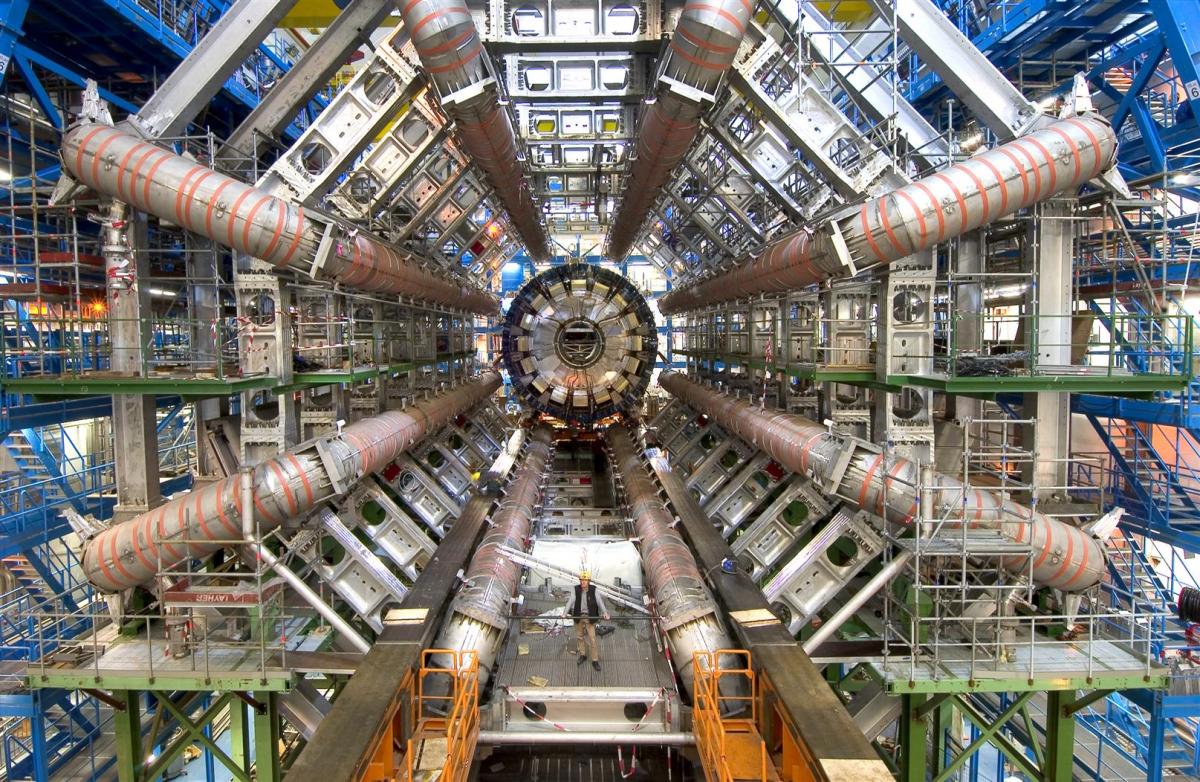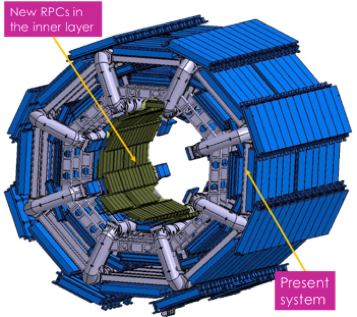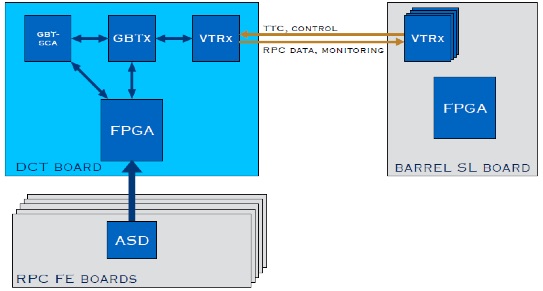ATLAS Experiment

ATLAS Experiment

The new RPCs in Phase 2

Prototype of the DCT board

Block diagram of the DCT board from the Technical Design Report for the Phase-II Upgrade of the ATLAS Muon Spectrometer.

A new chamber ready for testing
>ATLAS: ERC NPTEV-TQP2020OVERVIEW
ATLAS (A Toroidal LHC ApparatuS) is a multipurpose particle physics experiment detecting and recording the aftermath of head-on collisions between protons at the CERN Large Hadron Collider. The experiment is capable of exploring in detail the behaviour of elementary particles, such as quarks and leptons, at the highest energy ever probed while searching for new laws and particles. In 2012 ATLAS announced the discovery of the Higgs Boson. The experiment began recording data in 2008 and is expected to continue until about 2030.
The personnel at the University and INFN branch of Roma Tor Vergata contributed in key areas of the design and construction of the ATLAS detector and now participate in the detector operation and the data analysis.
RESEARCH ACTIVITY
The staff and students at the University and INFN Roma Tor Vergata (Rome 2) contributed to the design and construction of the Resistive Plate Chambers (RPC) of the ATLAS Detector and to the front-end electronics of the ATLAS muon system. Today the group is involved both in analysis of the huge amount of data being recorded by the experiment, and in the maintenance and development of the detector systems.
The Rome 2 group has expertise and is currently involved in top quark physics, B, charm, and Higgs boson physics and searches for deviation from the Standard Model. The group recently hosted the “New Physics at the TeV Scale” NPTEV-TQP2020 research programme, a substantial grant of the European Union which supported until 2021 selected measurements of the dynamics of top quarks with significant potential for discoveries.
We also have a leading role in Muon Trigger and the future RPC upgrades, which are planned to take place in the coming decade to enable the detector to function better and beyond the design luminosity and specifications.
COMPUTING
We host a Tier-3 Computing Center for ATLAS data analysis and post-processing. The cluster has 8 physical hosts and 272 cores, 520 GB RAM, 100 TB of dedicated storage for ATLAS post-processing data sets, using VMWare vSphere technology.
FUNDING
The group gratefully acknowledges funding primarily from the Italian National Institute for Nuclear Physics (INFN), the European Research Council and the Italian Ministry for Education, University, and Research.
ATLAS Muon Chambers Upgrade
The ATLAS detector has been initially designed to run for 10 years at a luminosity of 10^+34 cm-2 s-1. In order to withstand the new High Luminosity LHC program, which will progressively increase the luminosity by more than a factor of 7 and extend the experiment life at least until 2035, the detectors must undergo an intensive upgradeprogram.
The ATLAS Resistive Plate Chambers (RPC), part of the muon detection system, have been designed under the leadership of the Roma Tor Vergata ATLAS group, which accounts within its members the inventors of the RPCs themselves. Now this group is again leading an international collaboration in the effort of not only adapting the RPC system to the new challenges but, at the same time, propose a new generation of detectors having much extended performance. The new RPCs are completely redesigned from the sensitive elements to the Front End electronics to the readout system, implementing cutting edge ASIC technologies on chips designed in house.
The Upgrade program consists of two phases:
-
Phase1 foresees to install 32 new generation chambers already in 2019, to reinforce the trigger in muon transition region. This project is led by the Roma Tor Vergata group and is considered as the pilot for a much larger upgrade in Phase 2
-
In the 2024 shutdown, the detector will prepare for the ultimate LHC performance (Phase 2) and ATLAS recently approved the Initial Design Review, proposed by the Roma Tor Vergata group for the installation of almost 300 new RPCs in the ATLAS barrel innermost layer, to boost the trigger performance in the whole ATLAS barrel. These new RPCs will inherit the Phase 1 technology as a starting point for a further evolution.
ATLAS Muon Trigger Upgrade
The ATLAS group at the University of Rome Tor Vergata is involved on the Trigger and Data Acquisition (TDAQ) Phase 1 and Phase 2 upgrades.
In particular, the group is carrying out performance studies for the ATLAS Barrel Muon Trigger for High Luminosity-LHC, in order to recover the present limitations, and in the design the Muon Barrel Trigger and Readout on-detector electronics.
The electronics activity is focused on the development of the prototypes of the DCT (Data Collector and Transmitter) board for Phase 1 (BIS78 project) and for Phase 2. The DCT board will be mounted on the RPC detector in the muon barrel and will collect data from front-end electronics, zero-suppress it and send it to the off-detector Sector Logic boards via optical fibers. It is designed employing radiation tolerant techniques to ensure robustness against SEUs (Single Event Upset) and TID (Total Ionizing Dose) radiation effects.
It hosts one FPGA (Field Programmable Gate Array) performing the digital logic, one GBTx (Giga-Bit Transceiver) chip for serial data transmission, one GBT-SCA (Slow Control Adapter) chip for board control and monitoring and one VTRx (Versatile Transceiver) optical transceiver.
The BIS78 Pad Board is the first prototype of the DCT. It will be hosted on the RPC BIS78 chambers in the Barrel region and will be used for the Endcap trigger logic.
ATLAS Publications
The ATLAS group at the University and INFN Roma Tor Vergata has contributed to over 900 articles already published by the ATLAS experiment. The paper on the discovery of the Higgs boson is here.
ATLAS Experiment: website



